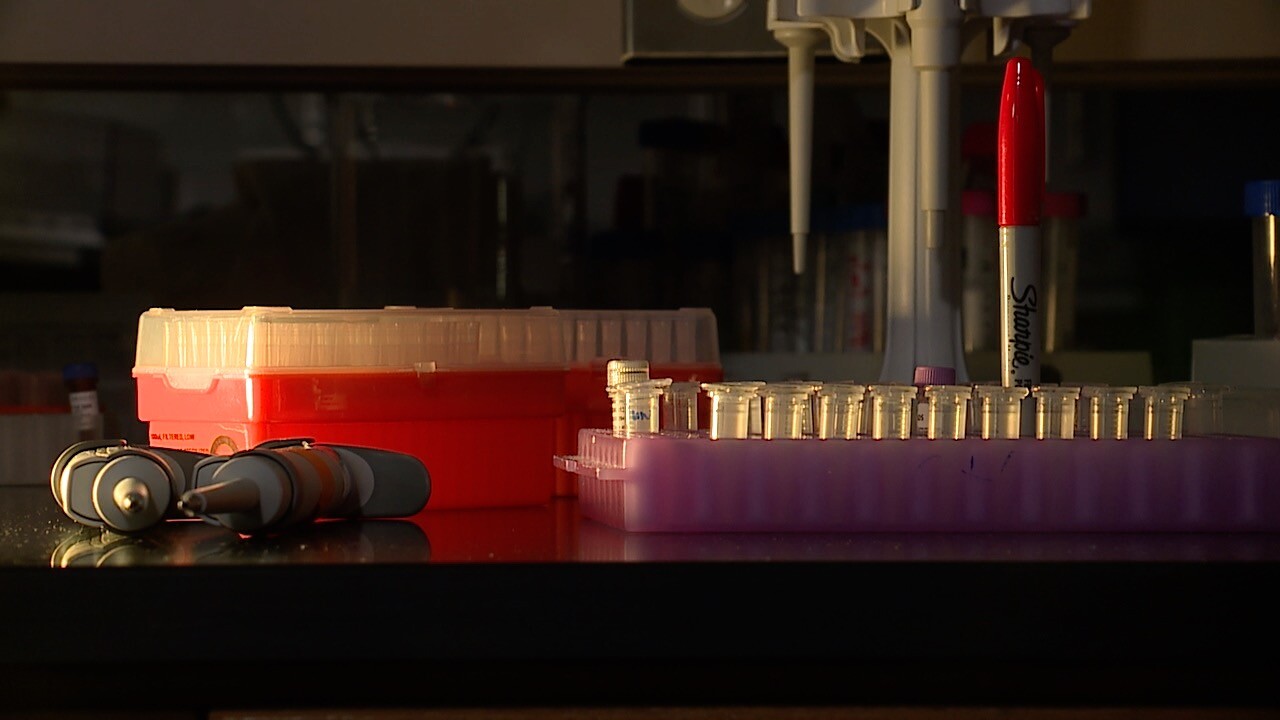CLEVELAND — On the same day that the World Health Organization named a new coronavirus variant of concern, Case Western Reserve University researchers released new findings that have identified compounds that have the potential to slow and even block the virus’ ability to replicate. Published in the journal "Science Advances," the new discovery, which was the result of a collaborative effort of researchers from CWRU, Rutgers and Duke University, could lead to treatments for future viruses.
Specifically, researchers identified molecules that can target the RNA of SARS-CoV-2 — or the genetic foundation of the virus. CWRU researchers, led by the university’s Rudolph and Susan Rense Professor of Chemistry, Blanton Tolbert, developed the mechanism in which the antiviral compounds are delivered to the virus. The breakthrough discoveries differ from most antivirals because they specifically target the RNA strands themselves instead of attaching to the infected cell’s proteins.

Tolbert said the journey that led to the discovery started with an informal meeting with his colleagues in February 2020 — just as the first novel coronavirus cases arrived in the United States.
“I have a very vivid memory of being at the whiteboard where we laid out those specific aims and goals of how we might arrive to where we are now,” Tolbert said. “The professional side of me kind of was activated in the sense that I know how to carve out a set of experiments. I have a lab. I have resources and infrastructure where we can actually do some things.”
Tolbert was joined by Amanda Hargrove, a chemistry professor at Duke University; virologist Gary Brewer; molecular biologist Mei-Ling Li as well as other researchers from the Washington University School of Medicine in St. Louis, the University of Michigan, the University of Nebraska-Lincoln as well as the University of Glasglow.

The group has a patent pending on their method, which built upon previous research that was done in investigating the virus that causes hand, foot and mouth disease. Their research identified a type of molecule called amilorides that could disrupt the replication of a virus’ replication.
The breakthrough application for the SARS-CoV-2 virus showed promising results in cell cultures, possibly paving the way for further testing in laboratory animals.
“I’m in this moment in time — real-time in a viral pandemic — and I have a set of expertise, knowledge and a collaborative network where I can make a contribution and an impact, it’s just remarkable,” Tolbert said. “I can’t put it any other way. It’s definitely not something I thought I would be doing even when I started my career independently. But to be here now in this moment in time, with the knowledge that I have, the infrastructure and the expertise, I’m super excited and we’ll see where it takes us.”

Tolbert said the use and delivery mechanism of the compound could have other uses in helping to stop the viruses of the future.
“We have to keep this thing moving to continue to learn as much as we can about these viruses,” Tolbert said. “It’s my way of being able to contribute to the hopeful end of this viral pandemic.”




